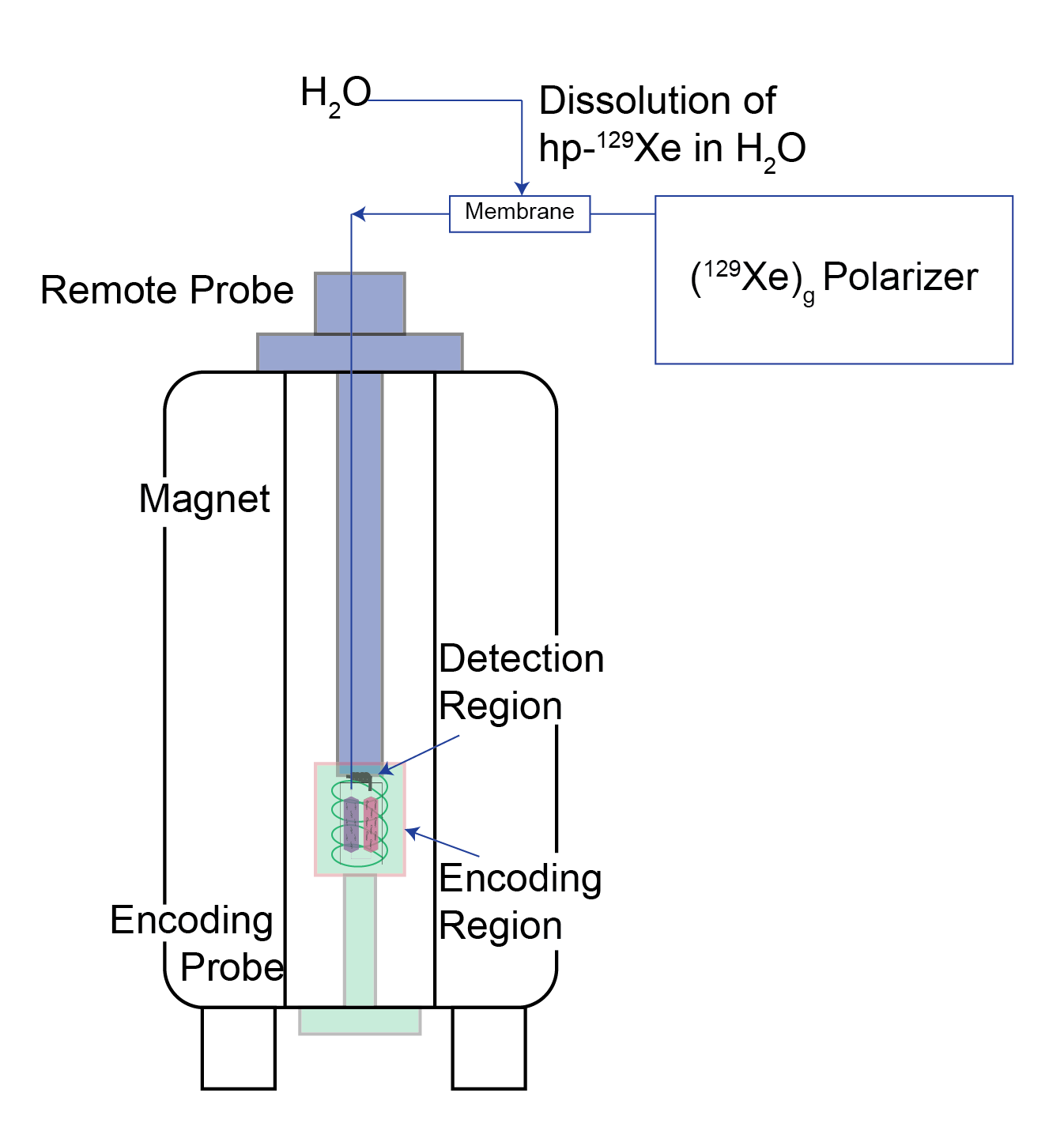
Molecular sensors have a wide variety of applications particularly when looking at systems that require a high level of specificity without being particularly qualitative. Such sensors can detect small molecules, components of complex natural product mixtures, or larger analytes such as functionalized quantum dots. Although NMR is already a powerful tool for chemical fingerprinting it lacks the sensitivity to detect analytes at micromolar or lower concentrations. Using xenon hyperpolarization along with remote detection molecular sensors give significant gains in sensitivity that allows us to detect analytes approaching subnanomolar concentrations.
These molecular sensors use an analyte-binding domain localized to the xenon binding site. During the highly specific binding event the local environment experienced by the xenon changes altering its observable chemical shift. Thus we can use the chemical shift information of the xenon to determine whether an analyte is bound. Previous work in collaboration David Wemmer and Matt Francis has shown that by taking advantage of xenon’s large chemical shift range ligand-binding is observable in the xenon NMR parameters.

The combination with remote detection and microfluidics is the first step in creating a small device capable of performing a highly selective assay with increased sensitivity. Future work will focus on detecting multiple components in parallel and incorporating molecular sensors functionalized to enhance signal using oriented media and chemical shift agents.
